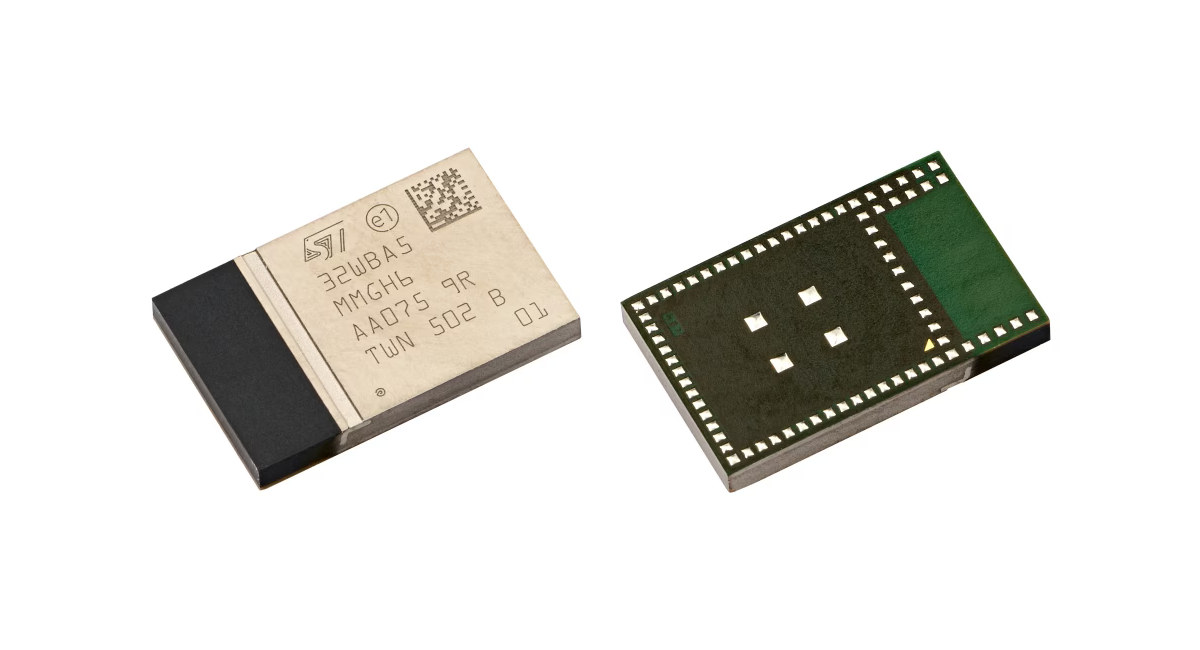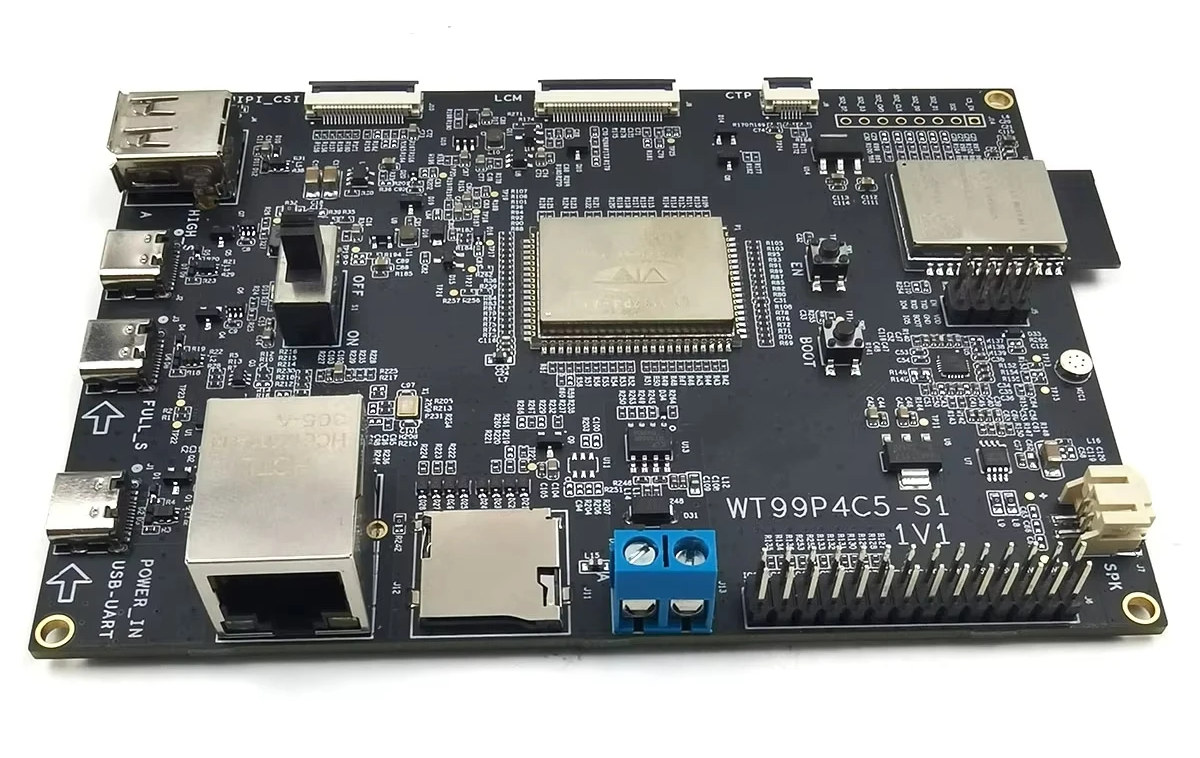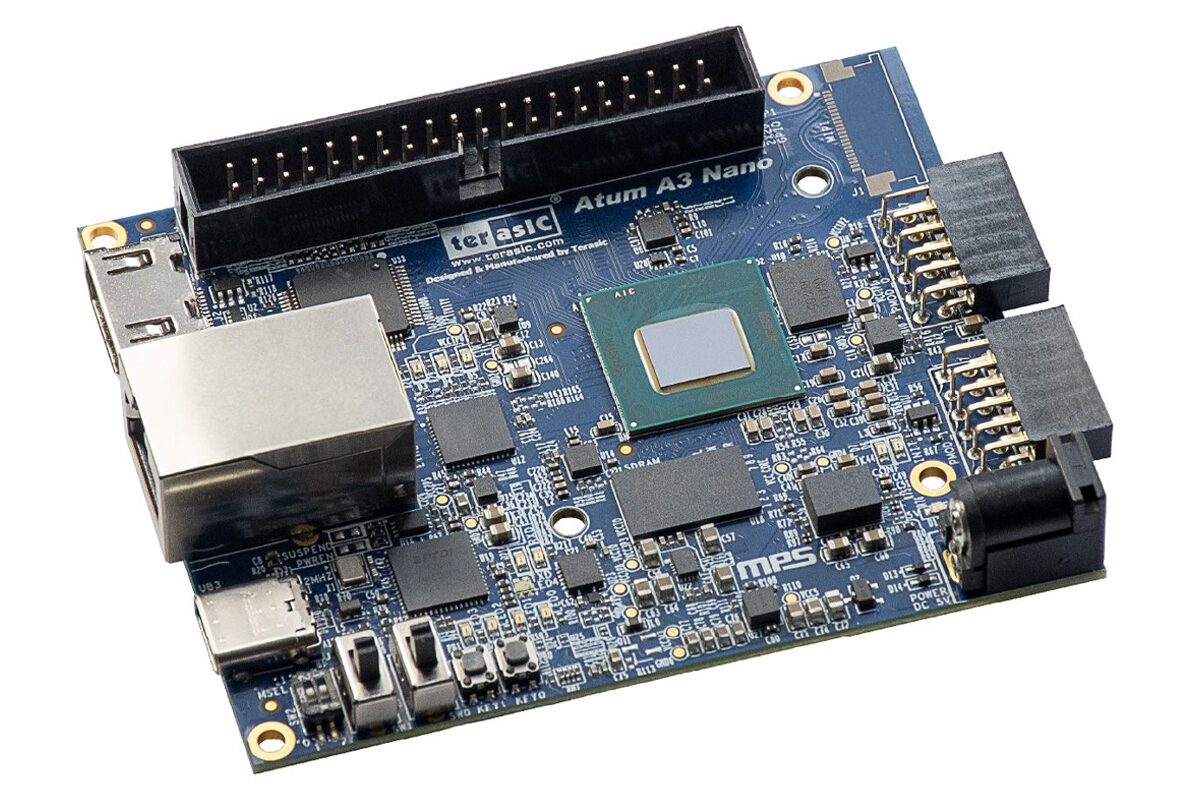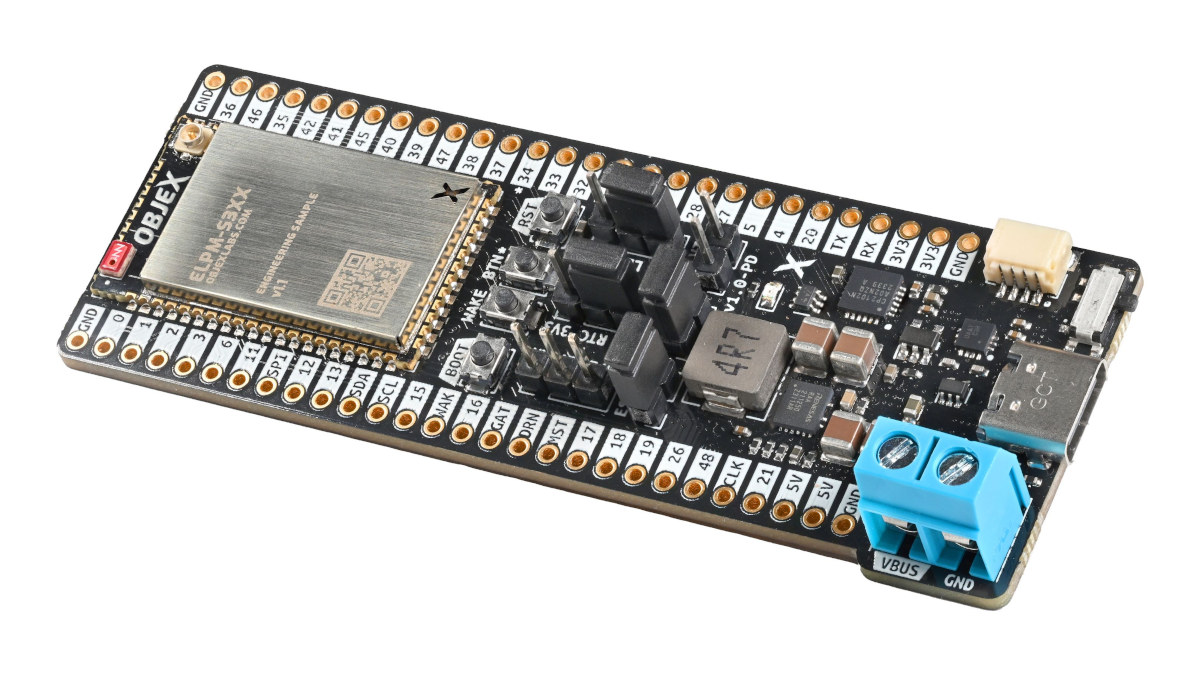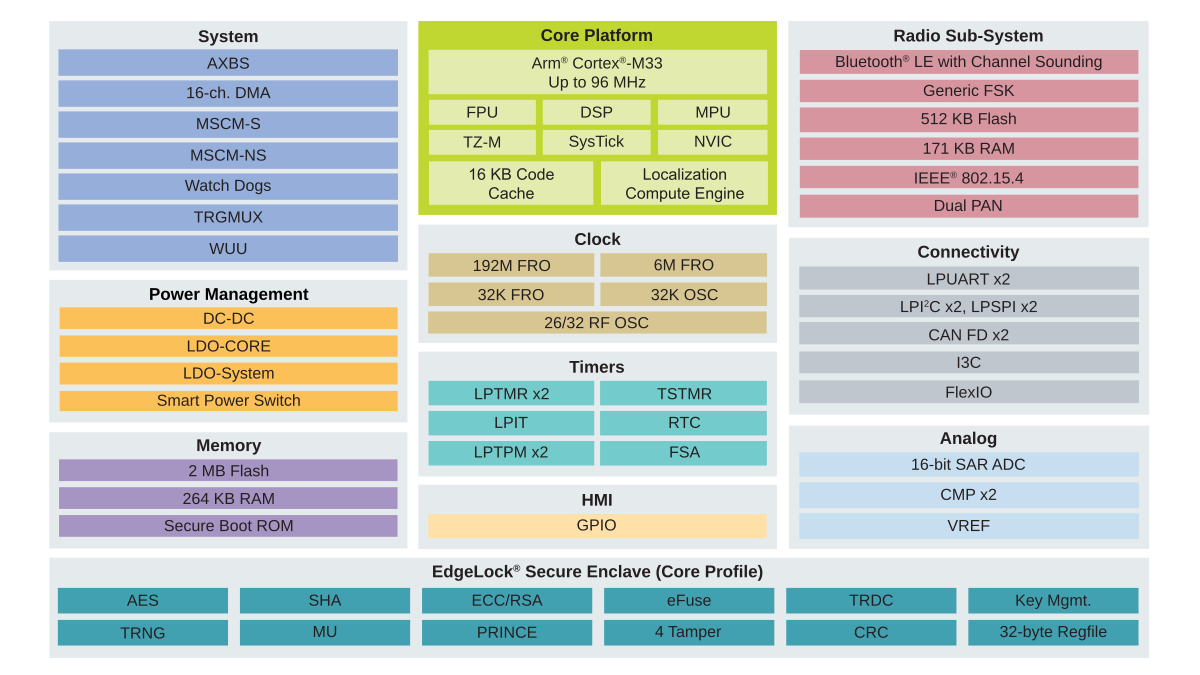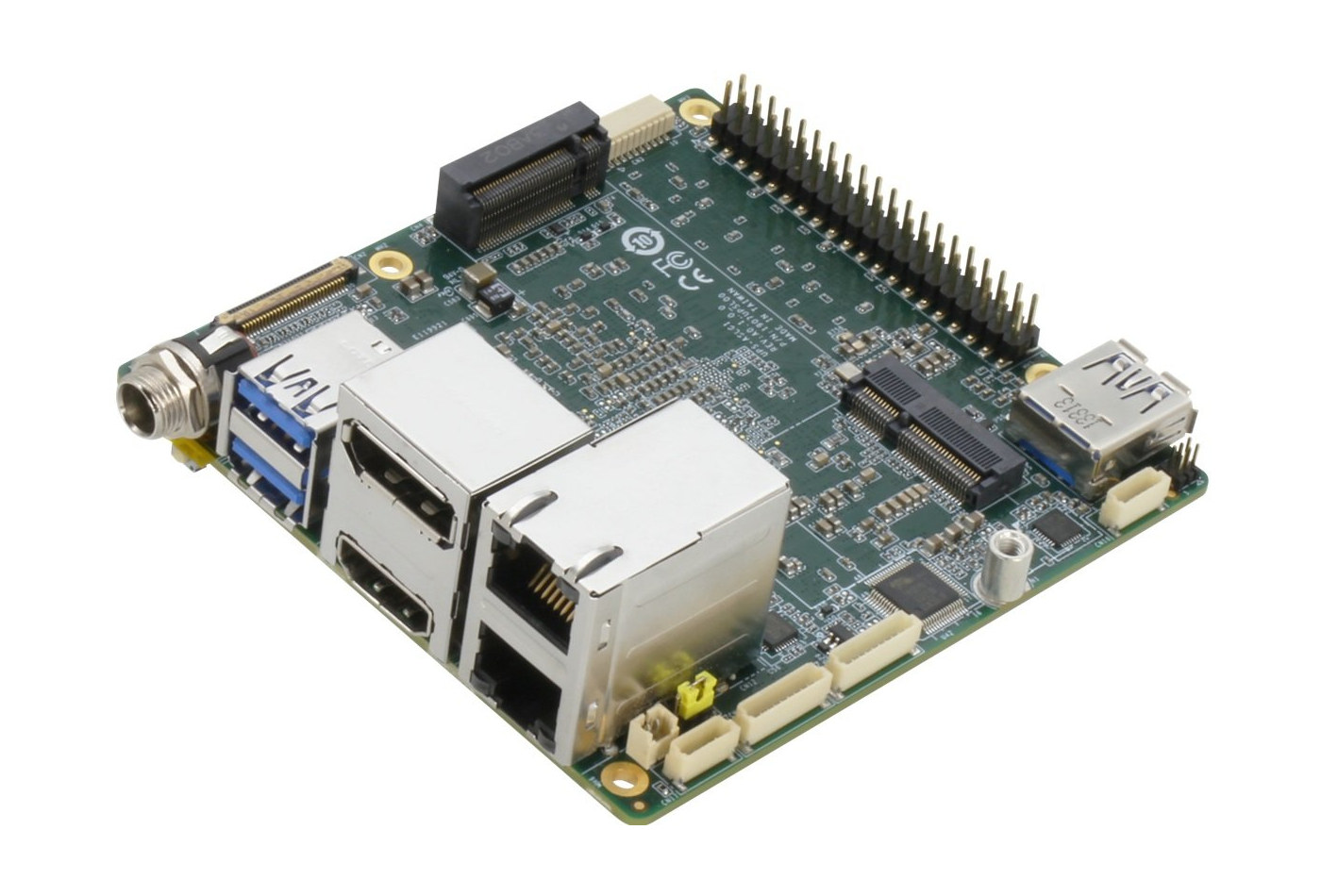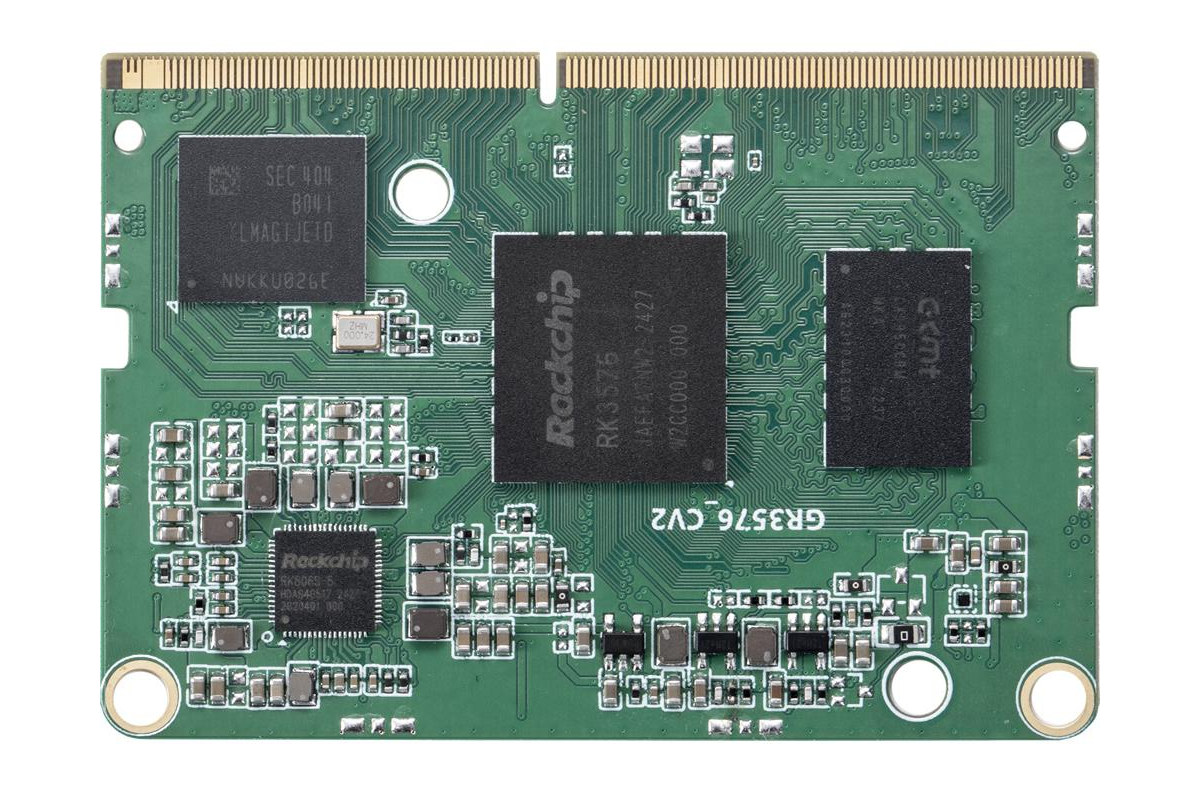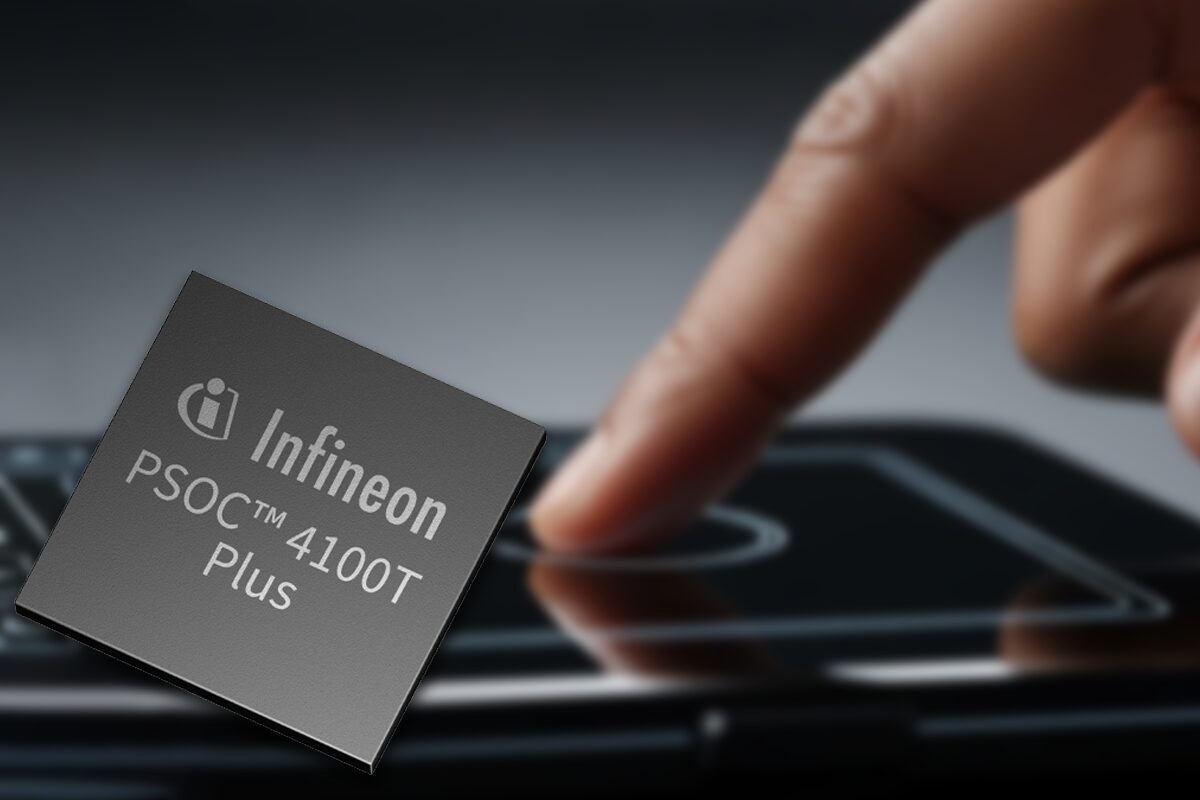STMicro’s STM32WBA5MMG is a tiny (12.5 x 8 mm), ultra-low-power 2.4 GHz wireless module based on the STM32WBA55UG wireless microcontroller with support for Bluetooth 6.0 LE, Zigbee 3.0, and OpenThread. The company further adds that designing a board for the module does not require any RF expertise, it provides a fully integrated Bill of Materials (BOM) with 32 MHz and 32 kHz crystals and integrated antenna matching or optional external antenna configurations, and its compatibility with 2-layer PCBs helps reduce costs. STM32WBA5MMG specifications: Wireless MCU – STMicro STM32WBA55UG Core – 32-bit Arm Cortex-M33 CPU with TrustZone®, MPU, DSP, and FPU Memory – 128 KB SRAM, including 64 KB with parity check Storage 1 MB flash memory with ECC, including 256 KB with 100 kcycles 512-byte (32 rows) OTP ART Accelerator – 8 KB instruction cache allowing 0-wait-state execution from flash memory (frequency up to 100 MHz, 150 DMIPS) Wireless Bluetooth […]
This ESP32-P4 board is equipped with an ESP32-C5 dual-band WiFi 6 module
All ESP32-P4 boards and devkits we’ve covered so far rely on ESP32-C6 for wireless connectivity, but the Wireless Tag WT99P4C5-S1 differs in that it pairs the ESP32-P4 RISC-V SoC with an ESP32-C5 wireless module featuring dual-band WiFi 6, Bluetooth LE 5.0, and an 802.15.4 radio for Zigbee, Thread, and Matter connectivity. The board also features MIPI DSI and CSI connectors for a display and a camera, GPIO headers for the ESP32-P4 and ESP32-C5 modules, a microSD card slot, a Fast Ethernet port, a built-in microphone, a speaker connector, an RS485 terminal block, and a few USB ports for data and debugging. Wireless Tag WT99P4C5-S1 board specifications: Core module – Wireless Tag WT0132P4-A1 SoC – Espressif Systems ESP32-P4 CPU Dual-core 32-bit RISC-V HP (High-performance) CPU @ up to 400 MHz with AI instructions extension and single-precision FPU Single-RISC-V LP (Low-power) MCU core @ up to 40 MHz with 8KB of zero-wait […]
Atum A3 Nano development board combines Agilex 3 FPGA and USB-Blaster III programmer (Crowdfunding)
Terasic’s Atum A3 Nano is a compact FPGA development board built around Altera’s largest Agilex 3 FPGA (A3CZ135BB18AE7S). The FPGA features 135K logic elements, embedded memory blocks (6.89 Mbit M20K, 1.4 Mbit MLAB), and 368 multipliers, making it suitable for demanding applications such as robotics, automotive systems, smart city infrastructure, consumer electronics, and advanced image processing. Measuring just 85 x 70 mm, the Atum A3 Nano board includes 64 MB SDRAM, Gigabit Ethernet, HDMI output, a microSD card slot, and an onboard USB-Blaster III programmer accessible via a USB Type-C port. Expansion options include a 40-pin GPIO header and two PMOD headers, and the board also features user I/Os like LEDs, buttons, and switches. Additionally, it supports add-ons such as displays, cameras, wireless modules, and motor control kits. Atum A3 Nano specifications: FPGA – Altera Agilex 3 A3CZ135BB18AE7S 135,110 logic elements 6.89 Mbit M20K, 1.4 Mbit MLAB 368 18×19 multipliers 4 I/O […]
OBJEX Link S3LW ultra-low-power ESP32-S3 LoRaWAN board takes up to 100W power input
OBJEX Link S3LW is a small development board based on the ultra-low-power ELPM-S3LW module with ESP32-S3 MCU and LoRaWAN connectivity and the ability to take 100W input via USB-C or a 2-pin terminal block for driving motors, controlling RGB LED strips, and other high-power projects. It’s compliant with the USB PD standard, features two 28-pin headers and a STEMMA I2C connector for expansion, as well as a built-in CP2102/CP2104 USB to serial bridge for debugging, and a few buttons. The company also offers an OBJEX ELPM-S3 module and OBJEX Link S3 board with the same features, minus LoRa/LoRaWAN support. OBJEX Link S3LW specifications: Wireless module ELPM-S3LW v1.2 Wireless SoC – ESP32-S3FN8 CPU – Dual-core 32-bit Xtensa LX7 microcontroller with AI vector instructions up to 240MHz, RISC-V ULP co-processor Memory – 512KB SRAM Storage – 8MB flash Wireless – 2.4GHz WiFi 4 (802.11b/g/n), Bluetooth 5.0 BLE + Mesh LoRa support LoRa […]
NXP MCX W72x Cortex-M33 wireless SoC supports Bluetooth 6.0 with Channel Sounding, Zigbee, Thread and Matter
NXP MCX W72x series Cortex-M33 wireless SoCs support for Bluetooth 6.0 and an 802.15.4 radio for Zigbee, Thread, and Matter. The MCX W72x family also implements Bluetooth Channel Sounding for accurate distance measurements with the help of a Localization Compute Engine (LCE) to reduce latency. It’s the second MCU part of the MCX W wireless family following the MCX W71x MCU, and the new MCX W72x wireless microcontroller is offered with up to 264 KB SRAM, 2MB flash, features a dedicated Cortex-M33 core to handle Bluetooth and 802.15.4 radios, implements an EdgeLock Secure Enclave for security, and integrates plenty a range of I/Os in a 48-pin package. NXP MCX W72x key features and specifications: MCU cores and memory/storage Application core – Arm Cortex-M33 core up to 96 MHz with 2 MB program Flash with ECC, 264 kB SRAM with ECC and parity Networking core – Arm Cortex-M33 core with dedicated […]
UP Squared TWL / Squared Pro TWL boards are powered by Intel Core 3 Processor N355, N250, or N150 Twin Lake CPU
AAEON has just introduced upgrades to its Alder Lake-N-powered UP Squared 7100 and UP Squared Pro 7000 SBCs with the UP Squared TWL and UP Squared Pro TWL development boards equipped with Twin Lake CPUs, either Intel Core 3 Processor N355, Intel Processor N250, or Intel Processor N150. Both SBCs can operate in the -20°C to 70°C temperature range, support up to three independent displays, and offer M.2 expansion sockets for storage and wireless, a 40-pin GPIO header, RS232/RS485 interfaces, and three USB ports. However, the UP Squared TWL is a smaller 90×85.6mm SBC with dual gigabit Ethernet, and the UP Squared Pro TWL has a slightly larger design (101.6×101.6mm) with dual 2.5GbE, a SATA port, MIPI CSI camera support, and optional cellular connectivity. UP Squared TWL Specifications: Twin Lake SoC (one or the other) Intel Processor N150 quad-core processor @ up to 3.6 GHz (Turbo) with 6MB cache, 24EU […]
Graperain GR3576_CV2 – A Rockchip RK3576 260-pin SO-DIMM SoM with up to 16GB RAM
Graperain GR3576_CV2 is a 260-pin SO-DIMM system-on-module (SoM) powered by a Rockchip RK3576 octa-core Cortex-A72/A53 SoC with a 6 TOPS NPU, and equipped with up to 16GB RAM and 256GB eMMC flash. The module supports up to six different display interfaces from HDMI to EBC for e-Paper displays, three camera inputs, a range of audio inputs and outputs, as well as USB 3.2, PCIe 2.1, and SATA interfaces, and plenty of other I/Os. Graperain GR3576_CV2 specifications: SoC – Rockchip RK3576 CPU – Octa-core CPU with 4x Cortex-A72 cores at 2.2GHz, 4x Cortex-A53 cores at 1.8GHz GPU – Arm Mali-G52 MC3 GPU with support for OpenGL ES 1.1, 2.0, and 3.2, OpenCL up to 2.0, and Vulkan 1.1 NPU – 6 TOPS (INT8) AI accelerator with support for INT4/INT8/INT16/BF16/TF32 mixed operations. VPU Video Decoder H.265, VP9, AV1, and AVS2 up to 8Kp30 or 4Kp120 H.264/AVC and MJPEG up to 4Kp60 Video […]
Infineon PSoC 4100T Plus multi-sense Arm Cortex-M0+ MCU supports ML-based liquid level sensing, wake-on-touch with 8µA deep sleep mode
Infineon PSoC 4100T Plus is a new low-power Arm Cortex-M0+ MCU designed for battery-powered or low-power embedded systems that require advanced capacitive touch and proximity sensing. The microcontroller comes with 128 KB of flash, 32 KB of SRAM, and an 8 KB ROM. One of the most interesting features of this MCU is Infineon’s fifth-generation CapSense MSCLP technology, which enables high-resolution, low-power capacitive sensing even in deep sleep mode (as low as 8 µA). Its capacitive sensing uses both self and mutual capacitance methods, supported by analog front-end filtering, sigma-delta modulation, and digital filtering techniques, delivering a signal-to-noise ratio greater than 5:1 for accurate detection. The MCU supports gesture detection, human-machine interfaces (HMI), and smart sensing applications, making it ideal for wearables, consumer devices, and IoT systems. Additional features include a 12-bit 1-MSps SAR ADC, six TCPWM blocks, smart I/O with programmable logic functions, multiple UART/I2C/SPI interfaces, and up to […]


